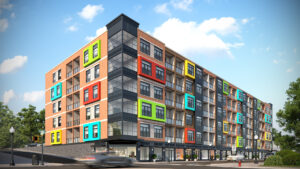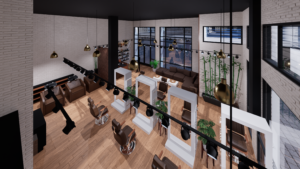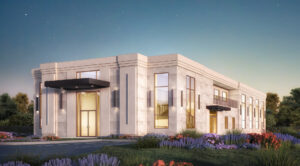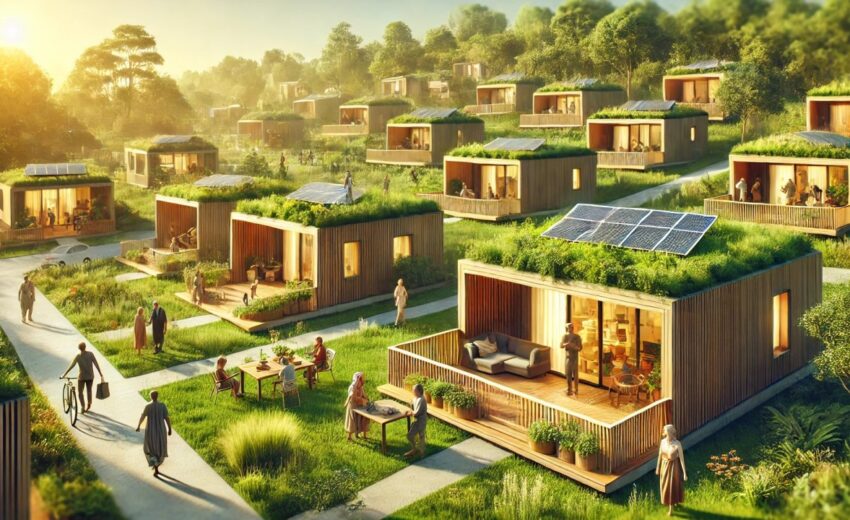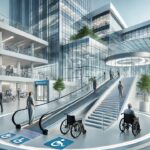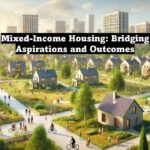The demand for affordable housing has surged like never before, yet affordability should never undermine quality.
With innovative design solutions, it is entirely possible to craft housing that is affordable, dignified, livable, and contributes to the overall well-being of its residents.
Here are key strategies architects and developers can adopt to deliver housing that balances quality, cost-effectiveness, and the unique needs of the community:
Include The Community In The Design Journey
Involving future residents and the surrounding community in the design process ensures that affordable housing solutions are tailored to the specific needs and desires of those who will call it home.
Through interactive workshops and collaborative design methods, developers can uncover essential insights, creating flexible designs that evolve with the community’s changing needs. This inclusive approach fosters a deeper sense of ownership and pride among residents, playing a key role in the enduring success of the housing project.
Embrace Eco-Friendly Construction Materials
Adopting sustainable materials in affordable housing projects reduces environmental impact and offers lasting cost advantages. Using materials like recycled steel, bamboo, and energy-efficient insulation not only supports eco-conscious building practices but also lowers long-term housing costs by minimizing energy usage.
These choices not only create healthier living spaces but also extend the lifespan of the housing units and reduce ongoing maintenance expenses, providing value for both residents and developers.
Emphasize Energy Efficiency
Designing with energy efficiency in mind reduces utility expenses for residents while enhancing the overall sustainability of the project. Incorporating elements like solar panels, energy-efficient windows, and modern appliances significantly lowers energy consumption.
In addition, passive solar design and natural ventilation help cut heating and cooling costs, making homes not only more affordable to upkeep but also contributing to broader environmental goals.
Nurture A Sense Of Belonging
Affordable housing should cultivate a strong sense of community. Designing spaces such as shared gardens, playgrounds, multi-purpose rooms, co-working zones, and community hubs encourages interaction and fosters a sense of connection among residents.
These communal spaces help build support networks and can greatly improve the quality of life for all who live there.
Ensure Universal Accessibility
Affordable housing must be designed to be inclusive, catering to the needs of all, including those with disabilities and the elderly.
By integrating universal design principles, such as barrier-free entrances, wider doorways, and accessible bathrooms, housing becomes universally functional, regardless of age or ability. This approach not only makes homes more affordable but also promotes equity, allowing all residents to live with dignity and independence.
Emphasize Practical Design
In affordable housing, every design choice should serve a practical purpose. A focus on functional design ensures that every inch of space is used effectively, minimizing waste while maximizing utility.
This means creating layouts that accommodate daily activities, offering sufficient storage, and prioritizing the functionality of key areas like kitchens, bathrooms, and living spaces. By making practicality a priority, affordable housing becomes more livable, meeting the genuine needs of its residents.
Integrate Intelligent Technology
Incorporating smart technology into affordable housing offers enhanced security, streamlined energy management, and increased convenience. Features like smart thermostats, automated lighting, and advanced security systems elevate the quality of life for residents, while also delivering cost savings by optimizing energy usage.
As technology evolves, embedding these innovations into affordable housing will be essential for creating forward-thinking, sustainable living environments.
Focus On Resilient Design
Resilient design is key to ensuring that affordable housing can withstand and recover from unexpected events, such as natural disasters or economic challenges. By integrating durable features like reinforced structures, flood-resistant materials, and backup power solutions, these homes can better protect residents from climate-related risks and other hazards.
Furthermore, designing homes that are adaptable to future shifts, whether in climate or community needs, ensures long-term stability and resilience. This approach not only secures the physical integrity of the housing but also provides residents with peace of mind and a lasting sense of security.
Building Communities Through Quality Affordable Housing
Crafting quality affordable housing is about more than just constructing buildings, it is about shaping thriving communities and delivering lasting value. By embracing these strategies, we can create housing solutions that are affordable, dignified, sustainable, and designed with the community in mind. Investing in quality affordable housing is an investment in both our communities and our future, proving that great design and affordability can truly work together for the greater good.


